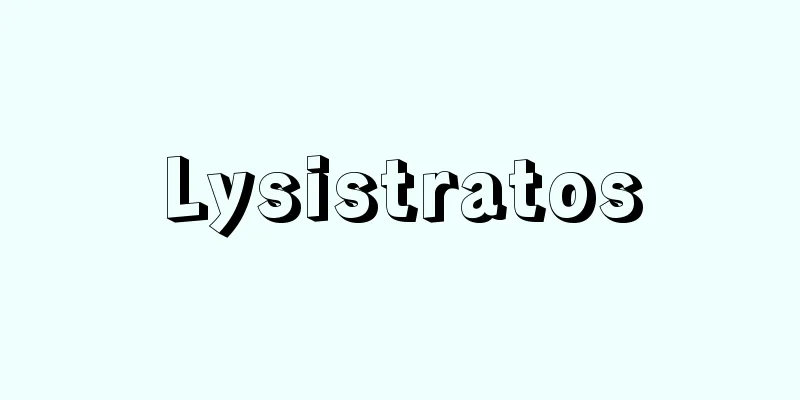Lysistratos

|
…This became the prototype for casting bronze or for transferring to stone or other materials using the “star-making” technique. According to Pliny the Elder, this technique was invented by the Sicyonian sculptor Lysistratos (active in the late 4th century BCE, brother and disciple of Lysippos), who cut plaster directly from human bodies. … *Some of the terminology that mentions "Lysistratos" is listed below. Source | Heibonsha World Encyclopedia 2nd Edition | Information |
|
…これがブロンズ鋳造用,あるいは〈星取り技法〉による石材などへの転写の原型となる。この技法は,大プリニウスによれば,シキュオンの彫刻家リュシストラトスLysistratos(前4世紀後期活躍。リュシッポスの兄弟で弟子)の創案とされ,彼は直接人間から石膏取りしたと伝えている。… ※「Lysistratos」について言及している用語解説の一部を掲載しています。 出典|株式会社平凡社世界大百科事典 第2版について | 情報 |
<<: Lysippe (English spelling)
>>: Lysmata amboinensis (English spelling)
Recommend
Allocation - Allocation
The OS secures the memory area required for softwa...
Golden Rule
Golden Rule in English. The fundamental ethics of ...
Japanese dance - Nihon Buyo
It is also called Hobui and is broadly classified...
Motorcycle
...a two-wheeled vehicle equipped with an engine....
Gospel - Fukuin (English spelling) gospel English
Originally, it was a translation of the classical...
Florentinus, T. (English spelling) FlorentinusT
…The first human dissection in the Middle Ages is...
Basic Salt
...In this case, the KH 2 PO 4 and K 2 HPO 4 obta...
scarlet lightning
...The flowers are about 3cm in diameter and redd...
Cardinal numbers
Please see the "Group Numbers" page. So...
Mr. Amari - Too much
A medieval samurai of Kai. A branch of the Takeda ...
Calcium chloride - enkarushiumu (English spelling) calcium chloride
A compound of calcium and chlorine. It is sometim...
Crossing - Crossing
〘noun〙① Something that passes from one place to an...
elementary entity
...its symbol is mol. Here, elementary entity is ...
Sovereignty - shuken (English spelling)
The state is said to have the highest power. By p...
Wireworm
…They have thoracic legs, and some have a pair of...




![Ikeda [town] - Ikeda](/upload/images/67cae6bba1789.webp)



![Richard [III] - Richard](/upload/images/67cd266fa1cfc.webp)
